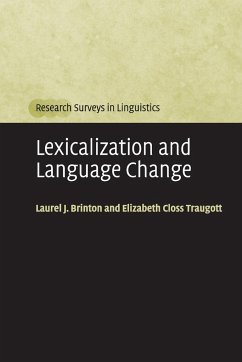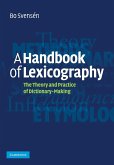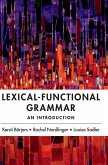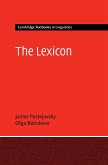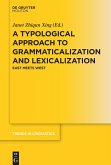Lexicalization, a process of language change, has been conceptualized in a variety of ways. Broadly defined as the adoption of concepts into the lexicon, it has been viewed by syntacticians as the reverse process of grammaticalization, by morphologists as a routine process of word-formation, and by semanticists as the development of concrete meanings. In this up-to-date survey, Laurel Brinton and Elizabeth Traugott examine the various conceptualizations of lexicalization that have been presented in the literature. In light of contemporary work on grammaticalization, they then propose a new, unified model of lexicalization and grammaticalization. Their approach is illustrated with a variety of case studies from the history of English, including present participles, multi-word verbs, adverbs, and discourse markers, as well as some examples from other Indo-European languages. The first review of the various approaches to lexicalization, this book will be invaluable to students and scholars of historical linguistics and language change.
Hinweis: Dieser Artikel kann nur an eine deutsche Lieferadresse ausgeliefert werden.
Hinweis: Dieser Artikel kann nur an eine deutsche Lieferadresse ausgeliefert werden.
'... very clearly structured. ... Brinton and Traugott's book represents a major contribution to our knowledge and understanding of the relationship between grammaticalization and lexicalization, and their role in language change. It not only provides a complete survey of previous approaches in a systematic way but also offers a new integrated model that is applied to some of the most controversial instances of linguistic change in the history of English, with a perspective on comparable changes cross-linguistically. The extensive list of references is an invaluable source of information about the wide variety of studies within this field of language change. The book is marked by an admirable clarity and vividness and will thus be extremely useful not only for experts in the field, but also for students trying to find an orientation in matters of language change.' Folia Linguistica

